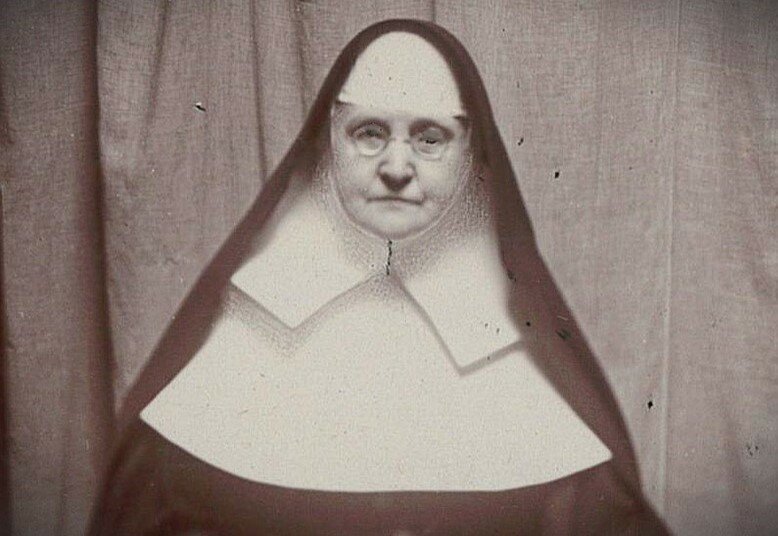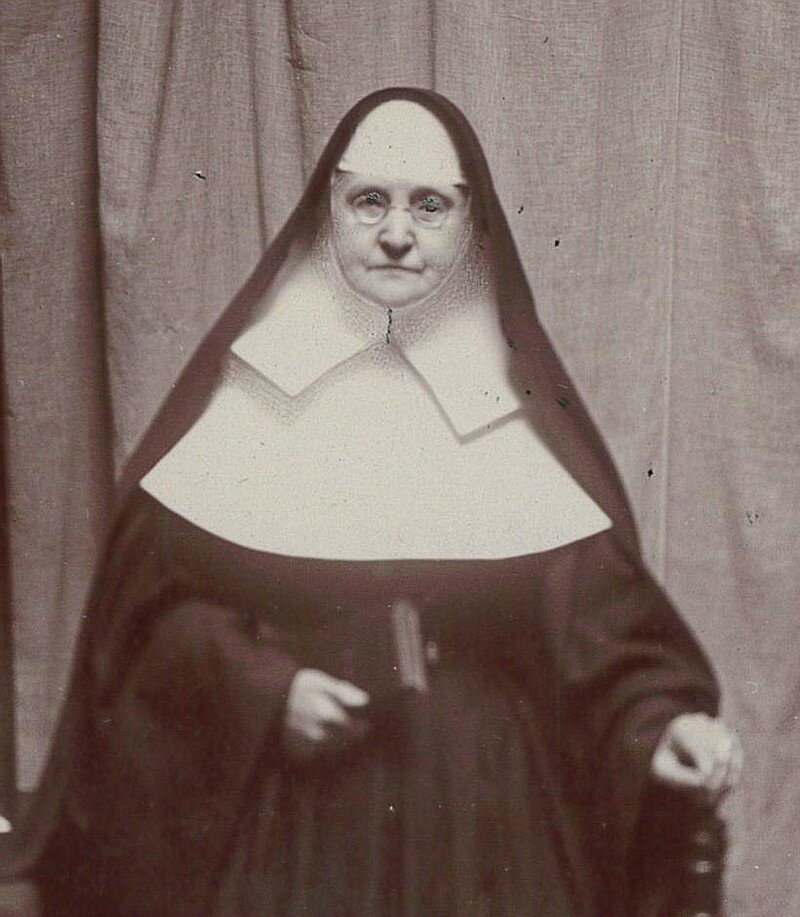First religious sisters in Jefferson City cared for Civil War wounded
Treated casualties on both sides — Survived heavy artillery fire near Glasgow
The first Catholic sisters to arrive in Jefferson City were Sisters of Mercy from Chicago.
They left the familiarity of their school and hospital work in the north to travel south in September 1861.
For context, Jesuit Father Ferdinand Helias had arrived 22 years earlier in Westphalia, and the first St. Peter Church in Jefferson City was only 15 years old.
St. Peter Parish had more than 40 families when the sisters arrived.
Col. James Mulligan was in charge of the “Irish Brigade,” or the 29th Illinois Volunteer Infantry, recruited in Chicago.
Col. Mulligan requested that the sisters send a contingent to care for “the suffering among his soldiers” as they were stationed at Lexington, Missouri in the first summer of the Civil War.
Lt. Timothy Shanley escorted six sisters to St. Louis, then up the Missouri River to Jefferson Landing.
State Auditor William Moseley and his wife, Eliza, who were from the Bootheel, invited the visiting sisters to stay with them.
The sisters then continued toward Lexington aboard the Sioux City steamer.
As they approached Glasgow, hundreds of Confederate troops emerged on both sides of the river’s banks. Mother Mary Francis was on the deck saying her prayers when the first shots flew past their boat.
The sisters gathered in the most protected place in the boat. There, they fully expected that their lives would end.
Instead, miraculously, the overwhelming firepower of the enemy neither harmed anyone aboard, nor sank the boat, which returned safely to Jefferson City.
Choosing to establish their care in the Capital City, the sisters again stayed with the Moseleys.
Later, the Moseleys departed from the city but left their home and enslaved people to assist the Sisters of Mercy.
The Union hospital was placed under the sisters’ care.
Before their arrival, nursing had been provided by fellow convalescing soldiers.
The sisters found the arrangement dingy, unsanitary and without sufficient furniture. Many of the wounded were on blankets on the floor.
Being the first women of a religious order in Jefferson City, they were met with a cold reception. But their compassion and vigilance soon yielded appreciation and gratitude.
Each morning, they marched in procession to Mass at St. Peter Church before taking up their hospital duties.
When Gen. John Fremont came to Jefferson City in late September 1861, he visited the sick under the sisters’ care and provided a generous amount of supplies for their continued work.
At the end of October, the hospital had 175 patients and by the end of December, it held 421.
Local doctor Bernard Bruns, who was mayor of Jefferson City at the time, assisted at the hospital.
Eventually, two more sisters and several other volunteers from Chicago joined them in Jefferson City. Auxiliary hospital space was added in Lindell Hall, formerly a seminary on State Street.
But by the end of February 1862, the Jefferson City hospital had only 100 patients and was discontinued.
The Sisters of Mercy left Jefferson City in April 1862 to take charge of the hospital steamer Empress. Aboard that vessel, they made several trips over five weeks to Pittsburgh Landing to pick up wounded from the Battle of Shiloh and transport them to hospitals in the west.
The Sisters of Mercy were founded in 1831 in Dublin, Ireland. Sisters arrived in Pittsburgh, Pennsylvania, in 1843, opening the first Mercy Hospital in the world in 1847.
The Irish order was among the first to volunteer as nurses in 1854 in the Crimean War, just as in America.
During the U.S. Civil War, more than 100 Sisters of Mercy served as nurses.
President Abraham Lincoln praised their charity and courage, calling them Angels of Mercy.
All six of the first Sisters of Mercy in Jefferson City were born in Ireland.
Mother Mary Borromeo Johnson later established Mercy Hospital in Davenport, Iowa, as the third hospital west of the Mississippi River, which helped care for the cholera outbreak there in 1873.
Sister Mary Monholland was described in the order’s archives as “feisty, faithful and financially savvy.” After the war, she established a school in Independence, Iowa, then followed Johnson to Davenport.
Sister Mary Louise Berry “soothed the agonies of the wounded and the dying of both armies, making no distinction between the Blue and the Gray,” her obituary said.
Sr. Mary Louise was in charge of the Jefferson City hospital, during the sisters’ stay. In the fall of 1862, she began her life’s work in Ottawa, Iowa, where she was buried with military honors and a U.S. Army headstone.
The Sisters of Mercy in Chicago also organized a nursing school. The order eventually established 800 hospitals across the nation, becoming the largest private hospital network.
This is not the same religious order which arrived in 1902 to establish a hospital in Jefferson City. Those were Franciscan Sisters of Mary from St. Louis.
A vestige of that hospital may be seen above Whitton Expressway near the tri-level.
Mrs. Brooks is a historian and former reporter for the Jefferson City News Tribune. She enjoys telling the lesser-known stories of the community’s past. She has published four books on local history. This article was a remnant of her research for her latest book, Murder & Mayhem Jefferson City, which was released in July.
This article was published in the June 3, 2023, edition of the News Tribune (newstribune.com) and is republished here with permission.
Comments
Other items that may interest you
Services
The Catholic
Missourian
2207 W. Main St.
Jefferson City MO 65109-0914
(573) 635-9127
editor@diojeffcity.org







